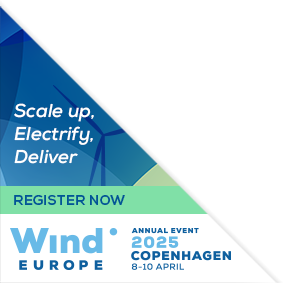Posters
Siblings:
ProceedingsProgrammeSpeakersPostersContent PartnersPowering the FutureMarkets TheatreResearch & Innovation in actionStudent programmePresenters dashboardCome meet the poster presenters to ask them questions and discuss their work
We would like to invite you to come and see the posters at our upcoming conference. The posters will showcase a diverse range of research topics, and will give delegates an opportunity to engage with the authors and learn more about their work. Whether you are a seasoned researcher or simply curious about the latest developments in your field, we believe that the posters will offer something of interest to everyone. So please join us at the conference and take advantage of this opportunity to learn and engage with your peers in the academic community. We look forward to seeing you there!

PO179: Cup anemometer calibration analysis across anemometer models and wind tunnels.
Isolde Byrne, Junior Energy Analyst, Mainstream Renewable Power
Abstract
As part of the ISO 17025 accreditation, cup anemometers are calibrated in wind tunnels following the IEC 61400-12-1 procedure, which provides slope and offset values for the individual anemometer signal transfer function. According to current industry best practice, two anemometers mounted on a single mast and measuring at the same height should have been calibrated in different wind tunnels from independent calibration bodies. This aims to introduce additional statistical independence in terms of measurement uncertainty estimation and prevents overcommitment to a single tunnel/calibration body. Mainstream Renewable Power set out to review its database of calibration certificates and look for evidence supporting this approach in the form of variation of calibration parameters with time and across different calibration tunnels. The findings showed that individual wind tunnels, while consistently demonstrating coherence within their own dataset, show different values when compared to other wind tunnels. Discrepancies in calibration offsets and calibration slopes among these tunnels highlighted the absence of universal agreement concerning values for a specific sensor model. These disparities are visually represented in the study's associated plots and are most pronounced in extensively utilized anemometers (e.g., Vector and WindSensor), which underwent calibrating in multiple facilities. The research unveiled temporal trends inherent to a particular sensor within a specific wind tunnel, leading to consequential fluctuations in calibrated wind speeds for identical anemometer models. Furthermore, the study explored changes over time in wind tunnel setup, such as the enhanced precision following the upgrade of the Svend Ole Hansen Denmark wind tunnel in 2011, resulting in a narrower range of calibration values post-implementation. It is recommended that these modifications or enhancements implemented by wind tunnels be subject to thorough scrutiny and validation by the industry, whenever feasible. This proactive approach ensures the validation and critical examination of outcomes generated by these wind tunnels.










